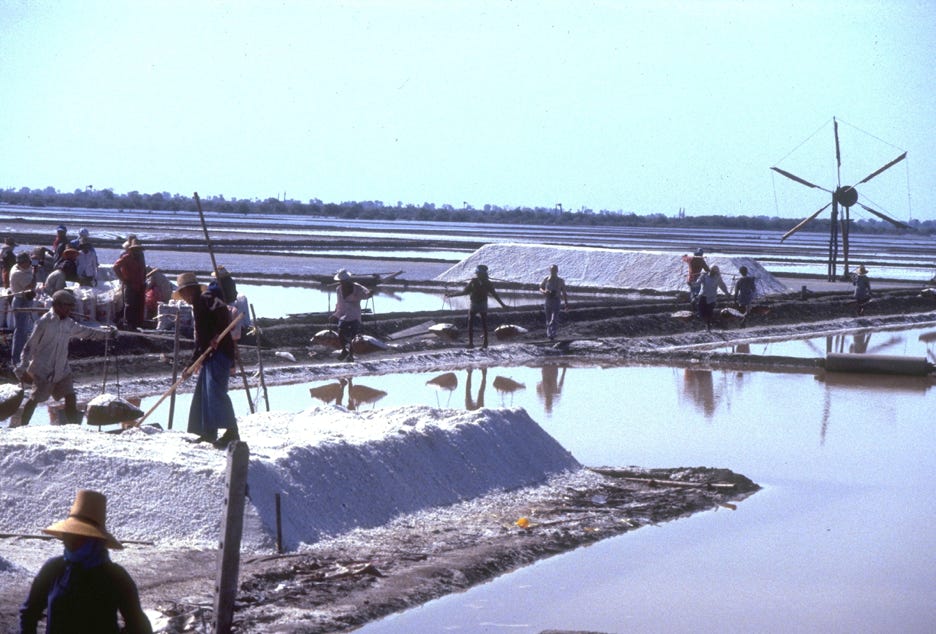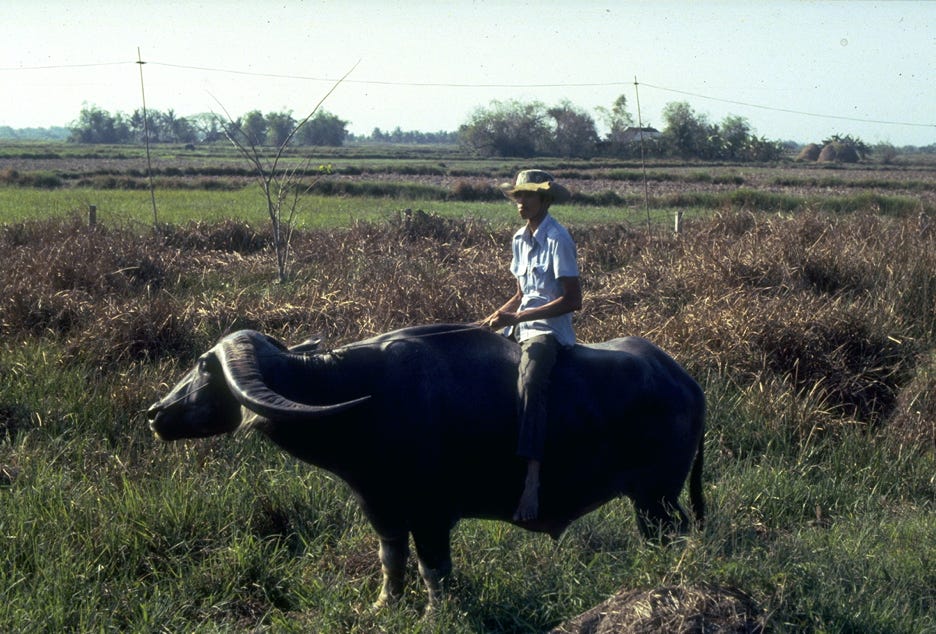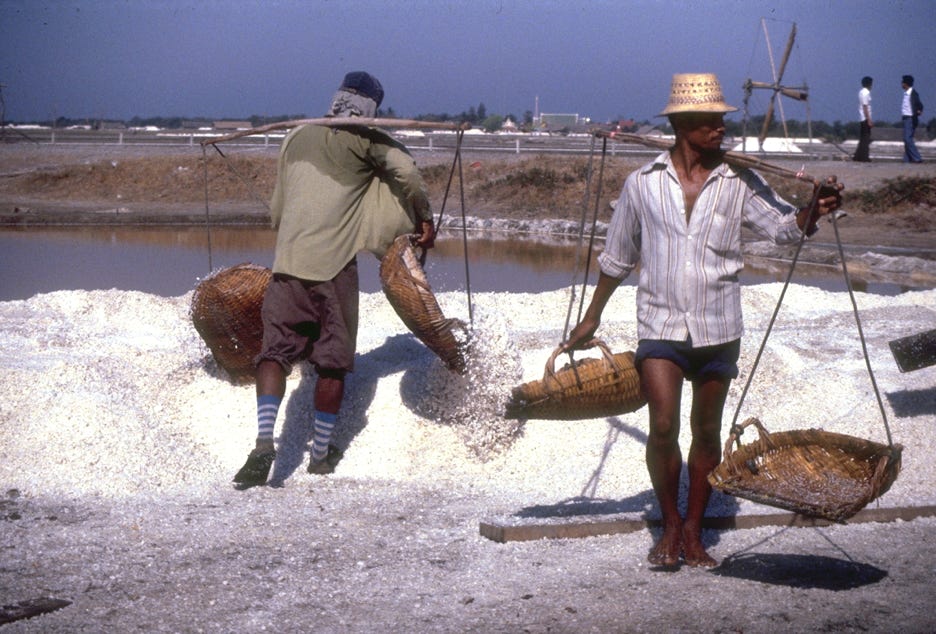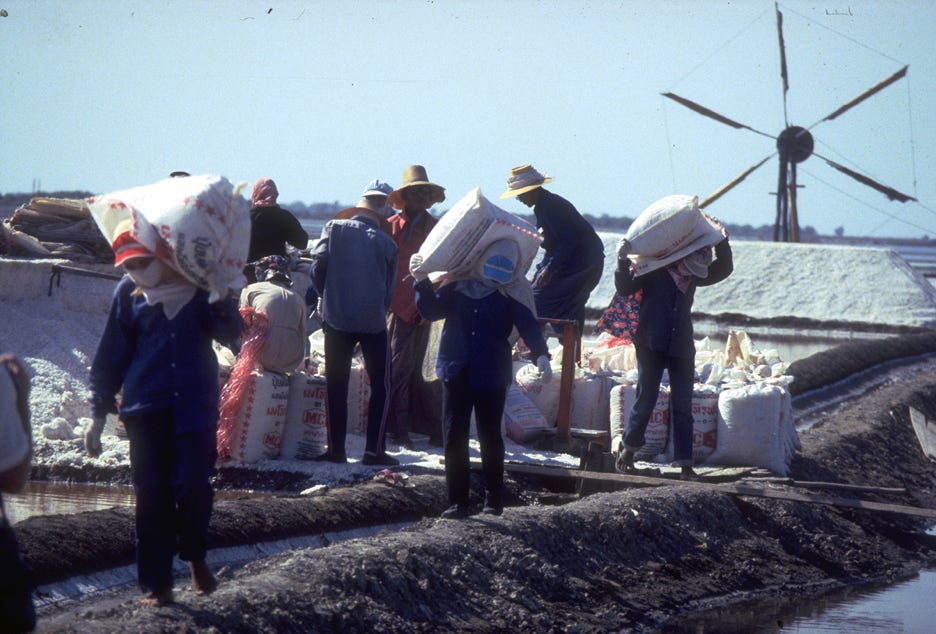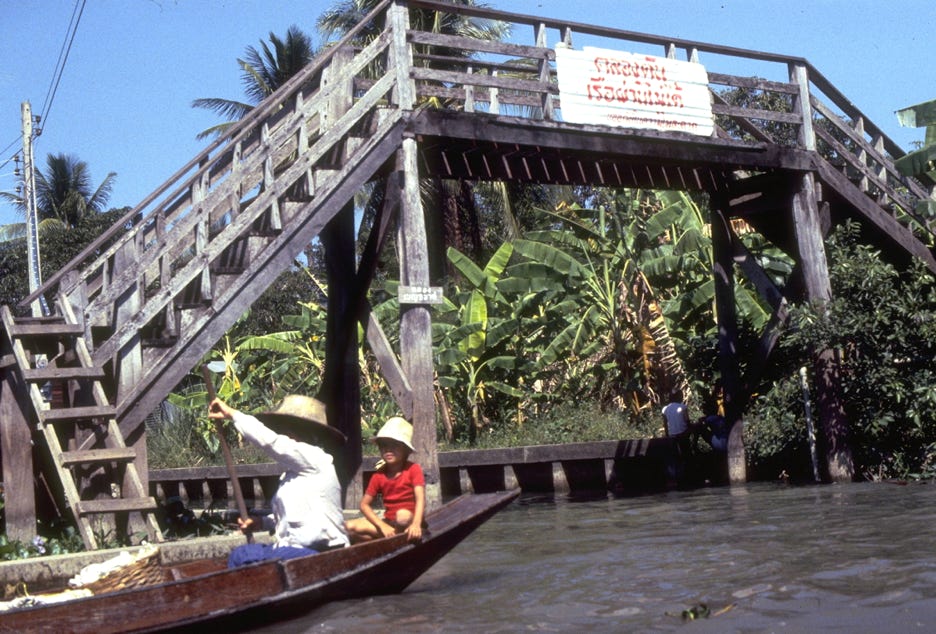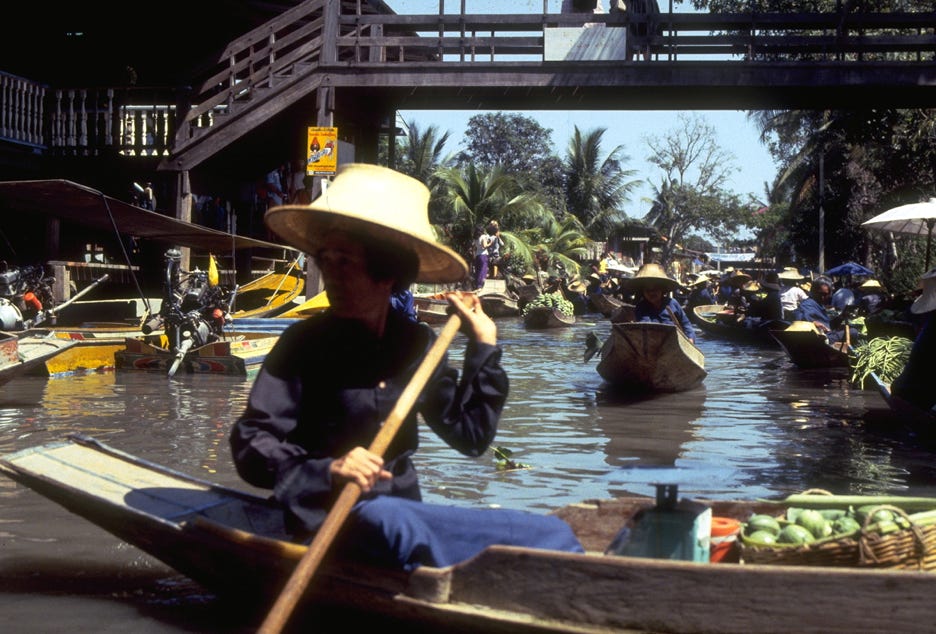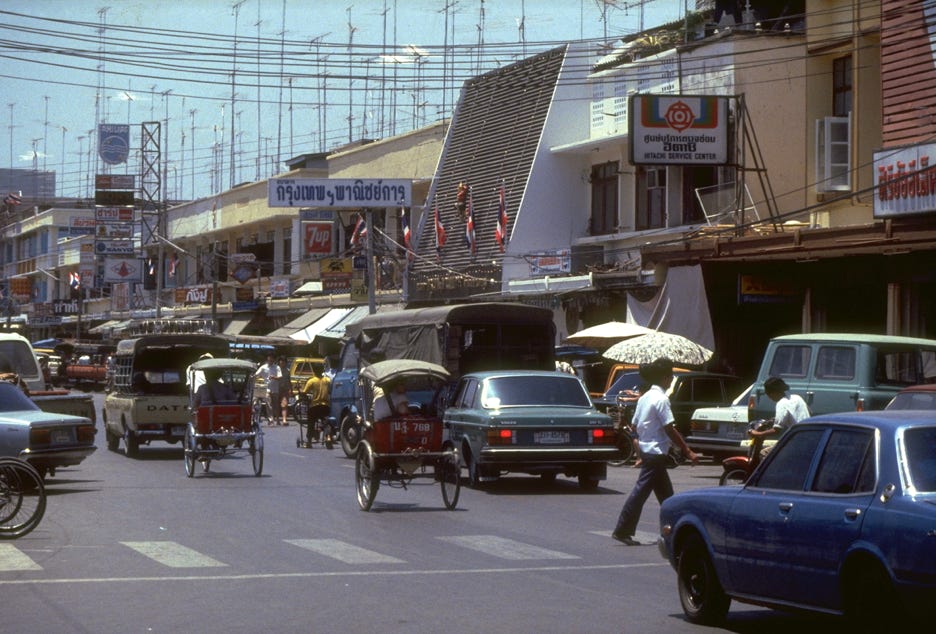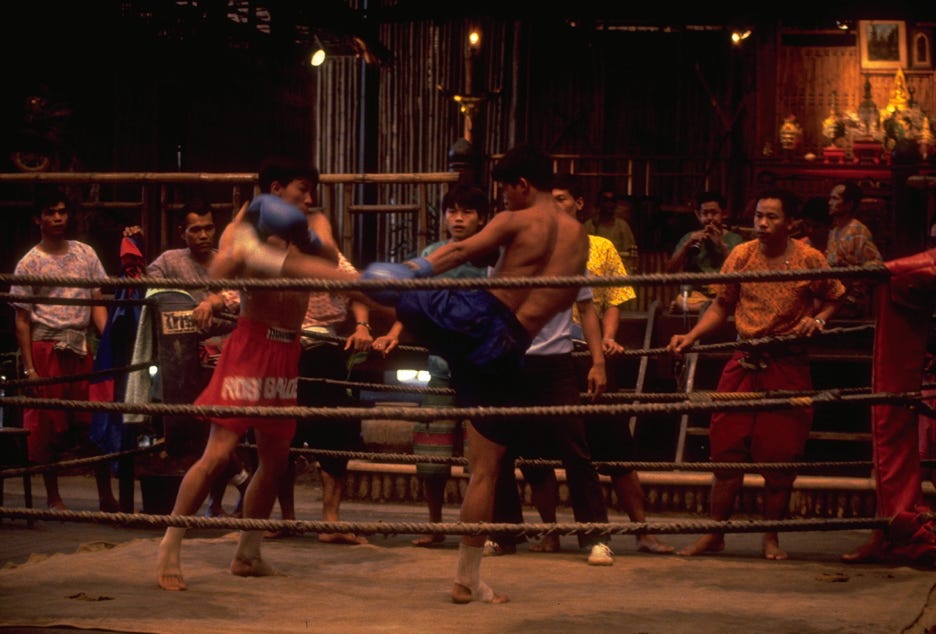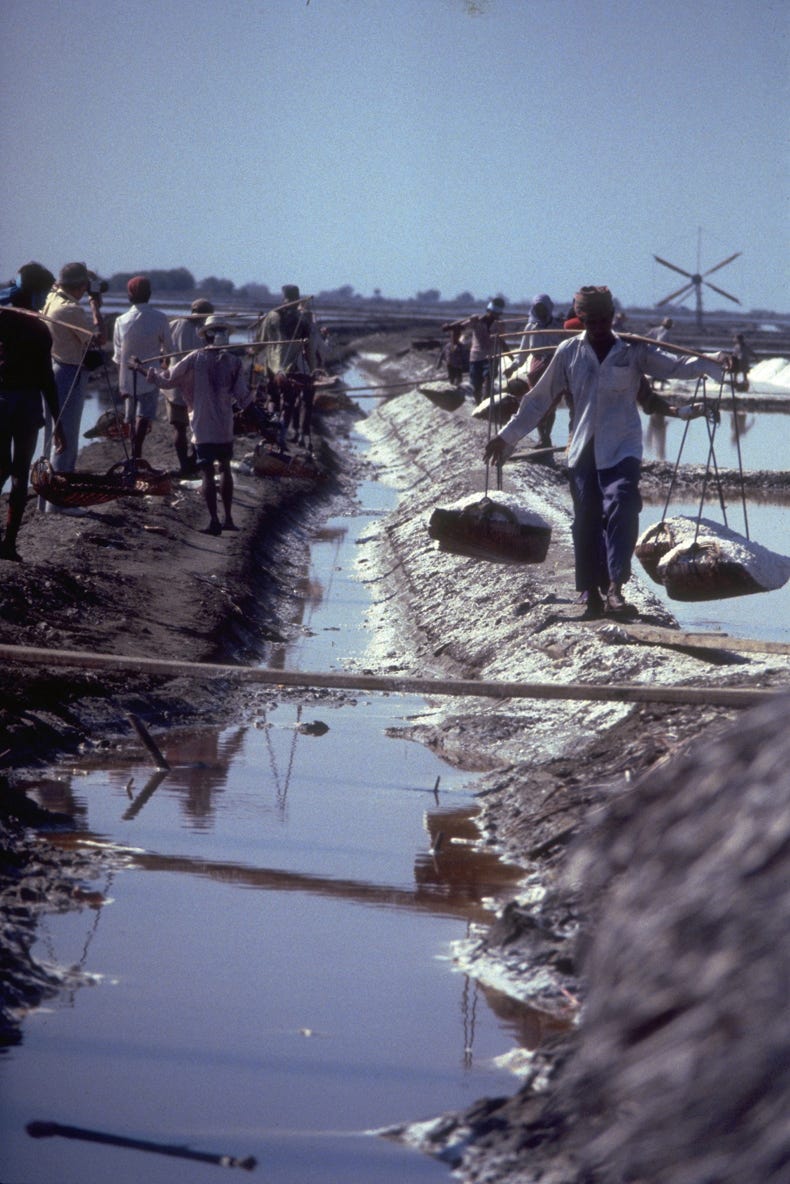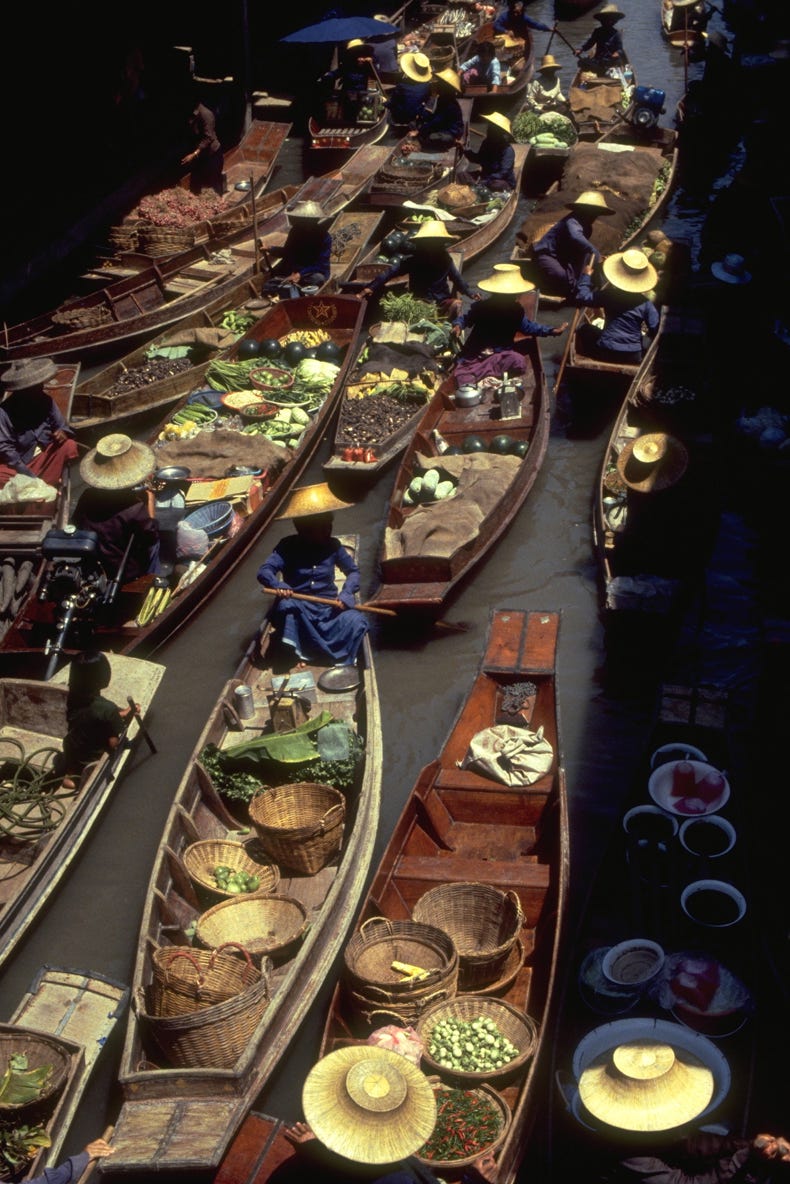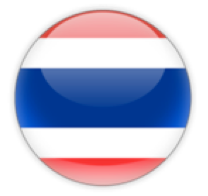

We had a wake-up call this morning at 6:00 am, with breakfast at 6:30. Despite some hurrying, I managed not to bloody myself too much with the “safety” razor provided in the room, lethal though it was. Breakfasts here are three course, first course being tropical fruits, second being cooked Asian food, and the third being coffee. I only had second course this morning, and I may just stick to first course in future. The hotel is international standard, so the water is safe to drink.
We were on the road by 7:30am this morning, and headed through Bangkok and down to the south and south-west. We seemed to cover about 250 kilometres. I thought we were just going to tour Bangkok, so it was a very pleasant surprise to get out into the countryside.
Bangkok is totally different to any city in Australia. It does not have a CBD as such, although the locals regard the area around the Phra Phuttha Yodfa Bridge over the Chao Phraya River as the focus. However, all of Bangkok has a generally uniform appearance. There are hardly any tall buildings because of the soft subsurface material (it is built on a delta and is sinking), and almost all the buildings are three or four storeys with a shop on the ground level, manufacturing above it, and a residence at the top. You could never draw a land use map of Bangkok; it would have to be three-dimensional.
Superimposed on this pattern, the street stalls and the shanty towns further complicate the situation. Bangkok is very heavily polluted with exhaust fumes (emission controls don’t seem to be a consideration here). Then there’s the noise (from hotted-up trucks, taxis and cars) and the dust – it’s the end of the dry season and everything looks covered with the grey dust from the black deltaic soil.
Buildings in Bangkok look as though they have been built well at first, and then just used with no maintenance at all. Ditto the cars, which are mostly Japanese although it can be seen that the wealthy drive Mercedes and Volvos. There are also lots of little three-wheeled Daihatsu taxis as well, known as ‘tuk-tuks’ because of the sound of their engines. Out of Bangkok, however, almost all the vehicles are trucks and buses.
It is only towards the fringes of Bangkok that the building pattern, and therefore the city’s appearance, changes. There the buildings become more spread out, and there are new housing developments (mostly private enterprise) taking over disused rice fields.
By the way, all our time in Bangkok is holiday time – today because it’s Saturday, tomorrow because it’s Sunday, and Monday because it’s the 200th birthday celebration for Bangkok. Not that this seems to mean much. The shops mostly still seem to open at 7:30am to 8:00am and close at about 9:00pm. The footpath street stalls still operate, and the hotel post office still keeps its usual hours of 8:00am to 10:00pm.
The first areas we went to south-west of Bangkok were very flat and uninteresting at first (although some of my seasoned fellow passengers informed me that they were still better than Hong Kong’s New Territories). Because these areas were neat the coast, they were salt-affected and therefore not very productive. In fact, about 80 kilometres from Bangkok, we came across a large salt evaporation area where ocean water is pumped into fields by windmills, left to evaporate, and then mined using very labour intensive methods. They extended for about 15 kilometres on both sides of the road. We drove as far as the mouth of the Mae Klong (which means Mother Canal) and then turned inland.
After passing through the small market town of Samut Songkhram, we drove through a succession of small villages. The vegetation became much thicker, greener and more lush as soon as we moved away from the coast. We passed over little humped bridges that crossed canals every 100 metres or so. Most of the vegetation here was coconut palms with irrigation channels between each row of trees, and lots of banana trees. The houses were all elevated to avoid flooding , built with local timber and palm construction, never painted, and usually with an open front wall affording a clear view inside. Almost every house had a black-and-white television set.
After about half an hour of driving inland, we boarded some river buses and toured the villages using the same means of transport as all the local people – the khlongs (or canals). Like streets, the canals were lined with houses and shops, and in places had floating markets (the canal equivalent of street-side vendors). The canal trip concluded at Damnernsaduak, the largest floating market. Here we were surrounded by local vendors wanting to sell us souvenirs and food. We quickly learned the art (and the necessity) of bargaining for everything you might be interested in buying. It was really an amazing, colourful sight.
We boarded the bus again, and after driving through some areas of sugar cultivation, we arrived at Nakhon Pathom, a provincial centre. (During the day, we covered four of Thailand’s 70-odd provinces). There is a large Buddhist temple in Nakhon Pathom, but after a cursory glance I decided to head across the road to the much more interesting street stalls and local markets which was where all the local action was taking place.
From Nakhon Pathom it was a short 20-minute drive to the Rose Garden where we had lunch (Thai food of course) and watched a cultural show that was designed to present a cross-section of Thai culture including a Buddhist ordination, finger nail dancing, cock fighting, minority nationality dances, Thai boxing, sword fighting, and so on. It was obviously a TT (tourist trap) but enjoyable in its own way nonetheless. Because I wanted to take photos, I was allowed in the front row of the show, and this inevitably led to my taking part in a dance at the end – about 10 from the crowd of several thousand were selected. Regrettably, several of the GeogSoc party managed to get photos of it.
Returning to Bangkok, we had dinner in the “Coffee Shop” of the hotel. I enjoyed my Thai pork in garlic and chilli, followed by strawberry ice cream.
After dinner I went for a street walk to explore the city, and it was magnificent. Out of the air conditioned hotel and feeling the full-on humidity of 30°C at 9pm at night, the noise, smells and activity of the traffic and street-side stalls was intoxicating; it had to be experienced to be believed. Most of the stalls were selling clothes and local food. It was a perfect end to a big, busy day.

